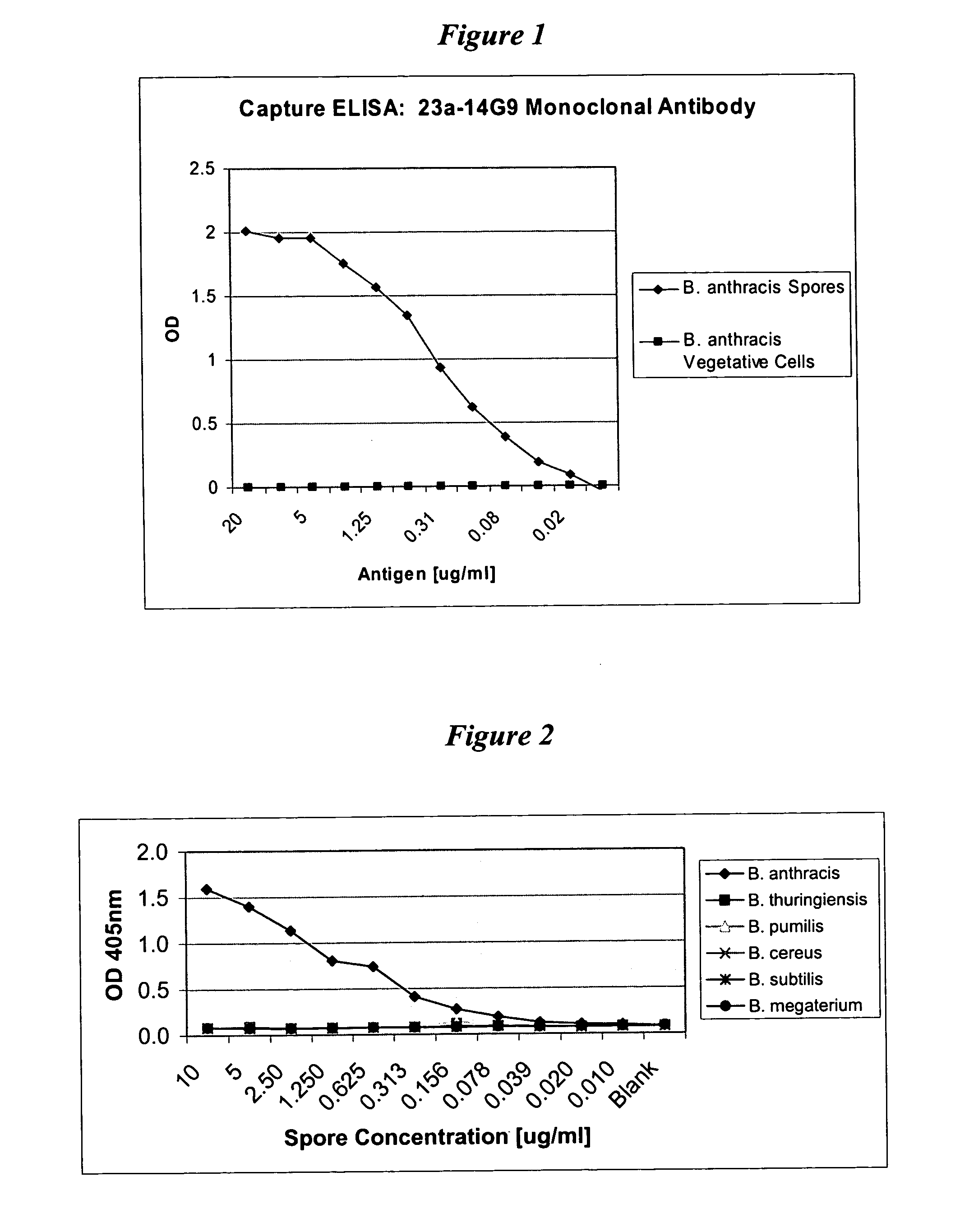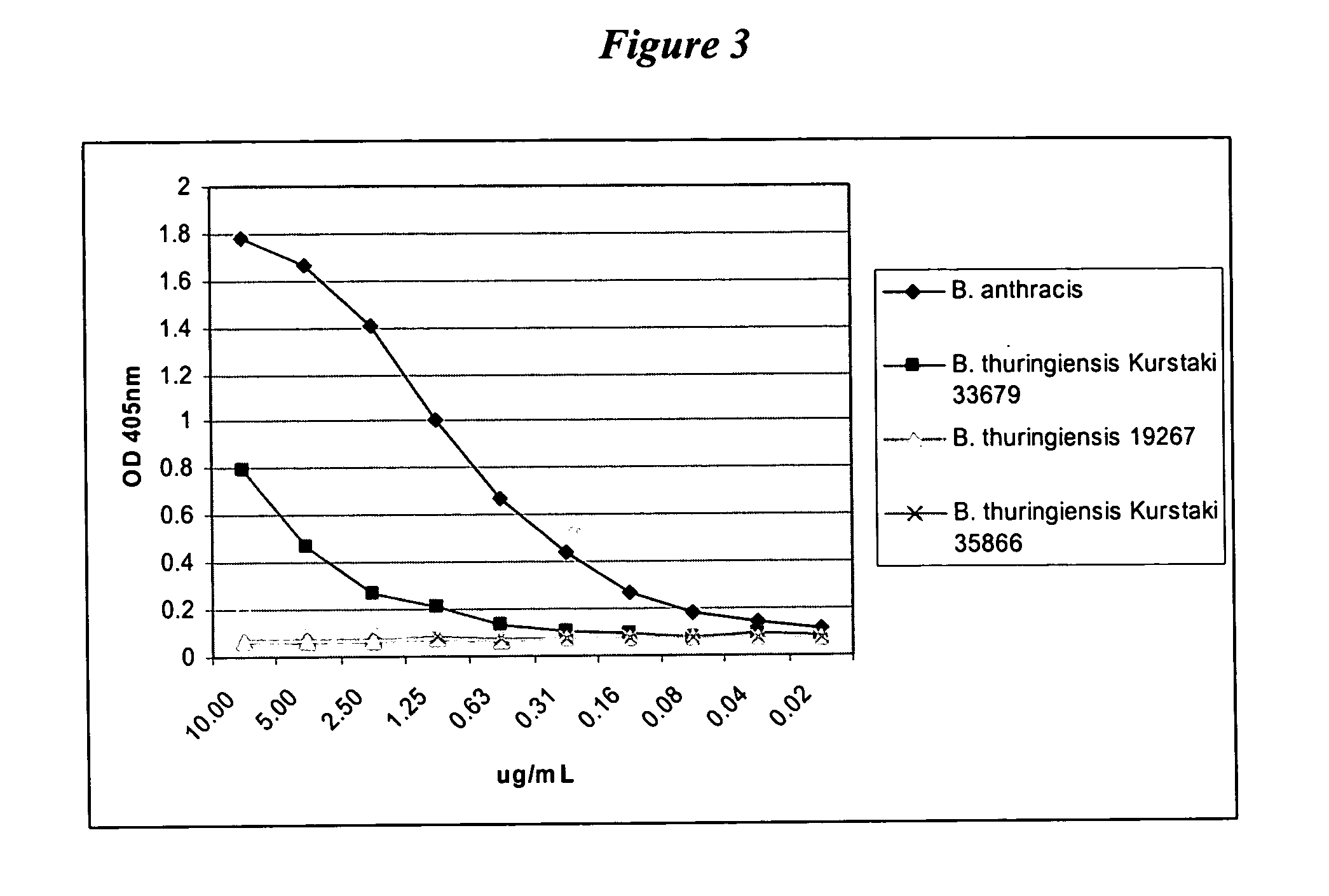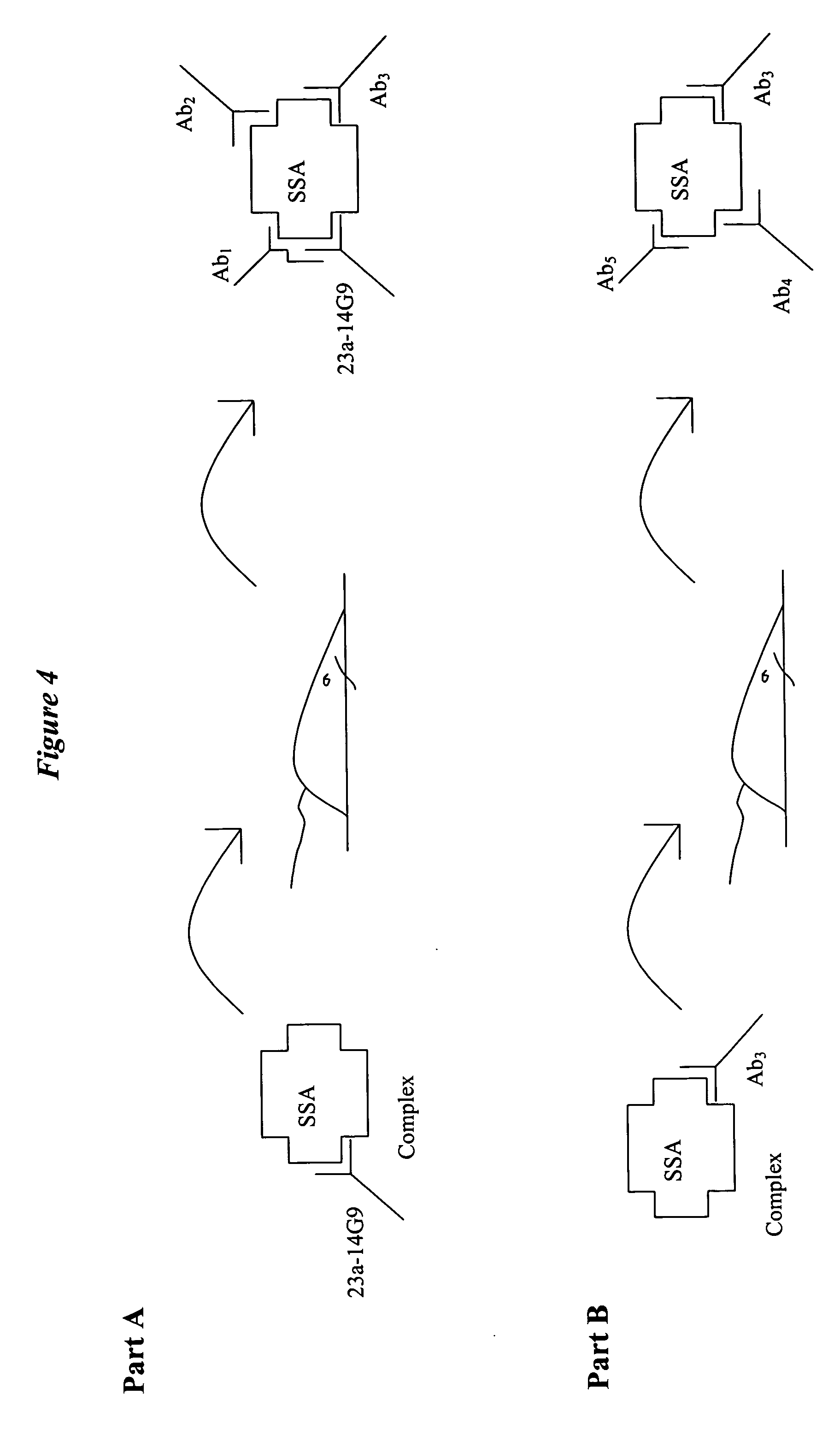Spore specific antibodies
a technology of specific antibodies and spores, applied in the field of spore specific antibodies, can solve the problems of individuals receiving a lethal dose of spores' death, and achieve the effect of rapid detection and identification
- Summary
- Abstract
- Description
- Claims
- Application Information
AI Technical Summary
Benefits of technology
Problems solved by technology
Method used
Image
Examples
example 1
23a-14G9 Recognizes a Spore-Specific Antigen
[0047] Materials and Methods
[0048] (1) Antigen Preparation
[0049] Spores:
[0050]B. anthracis was grown in confluent cultures on TSA plates for 3 days to allow sufficient time for vegetative cells to deplete essential nutrients from the medium resulting in spore formation. Bacteria / spores were washed off plates in sterile phosphate buffered saline (PBS) and incubated at 60° C. in a water bath for 1 hour to kill remaining vegetative cells while spores remain unaffected. Spores were then washed two times by centrifugation at 3400 rpm for 10 minutes at 4° C. An aliquot of the preparation was stained with malachite green to visualize spores to verify that the preparation contained a preponderance of spores, with very few vegetative cells present.
[0051] Vegetative Cell Antigens:
[0052]B. anthracis vegetative cells were cultured overnight in an aerated liquid culture. Vegetative cells were pelleted by centrifugation, washed, and then lyzed in ...
example 2
Specificity of 23a-14G9
[0057] The specificity of B. anthracis spore-specific monoclonal antibody 23a-14G9 is illustrated as follows. A capture ELISA was performed utilizing rabbit polyclonal IgG as the capture antibody and the B. anthracis spore-specific monoclonal antibody 23a-14G9 as the detector antibody. Spores from the following Bacillus organisms were used as antigens: B. anthracis Sterne; B. thuringiensis ATCC 35646; B. cereus ATCC 33018; B. pumilis ATCC 72; B. subtilis ATCC 6051; and B. megaterium ATCC 25833.
[0058] As shown in FIG. 2, monoclonal antibody 23a-14G9 reacted only with spores of B. anthracis. The antibody did not react with spores of B. thuringiensis, B. cereus, B. megaterium, B. pumilis, or B. subtilis. Thus, monoclonal antibody 23a-14G9 is specific to B. anthracis and can be used to detect and differentiate B. anthracis spores from other Bacillus spores.
[0059] Using the same conditions, the 23a-14G9 antibody was tested against spores of the following Bacillu...
PUM
| Property | Measurement | Unit |
|---|---|---|
| Concentration | aaaaa | aaaaa |
| Composition | aaaaa | aaaaa |
Abstract
Description
Claims
Application Information
 Login to View More
Login to View More - R&D
- Intellectual Property
- Life Sciences
- Materials
- Tech Scout
- Unparalleled Data Quality
- Higher Quality Content
- 60% Fewer Hallucinations
Browse by: Latest US Patents, China's latest patents, Technical Efficacy Thesaurus, Application Domain, Technology Topic, Popular Technical Reports.
© 2025 PatSnap. All rights reserved.Legal|Privacy policy|Modern Slavery Act Transparency Statement|Sitemap|About US| Contact US: help@patsnap.com



